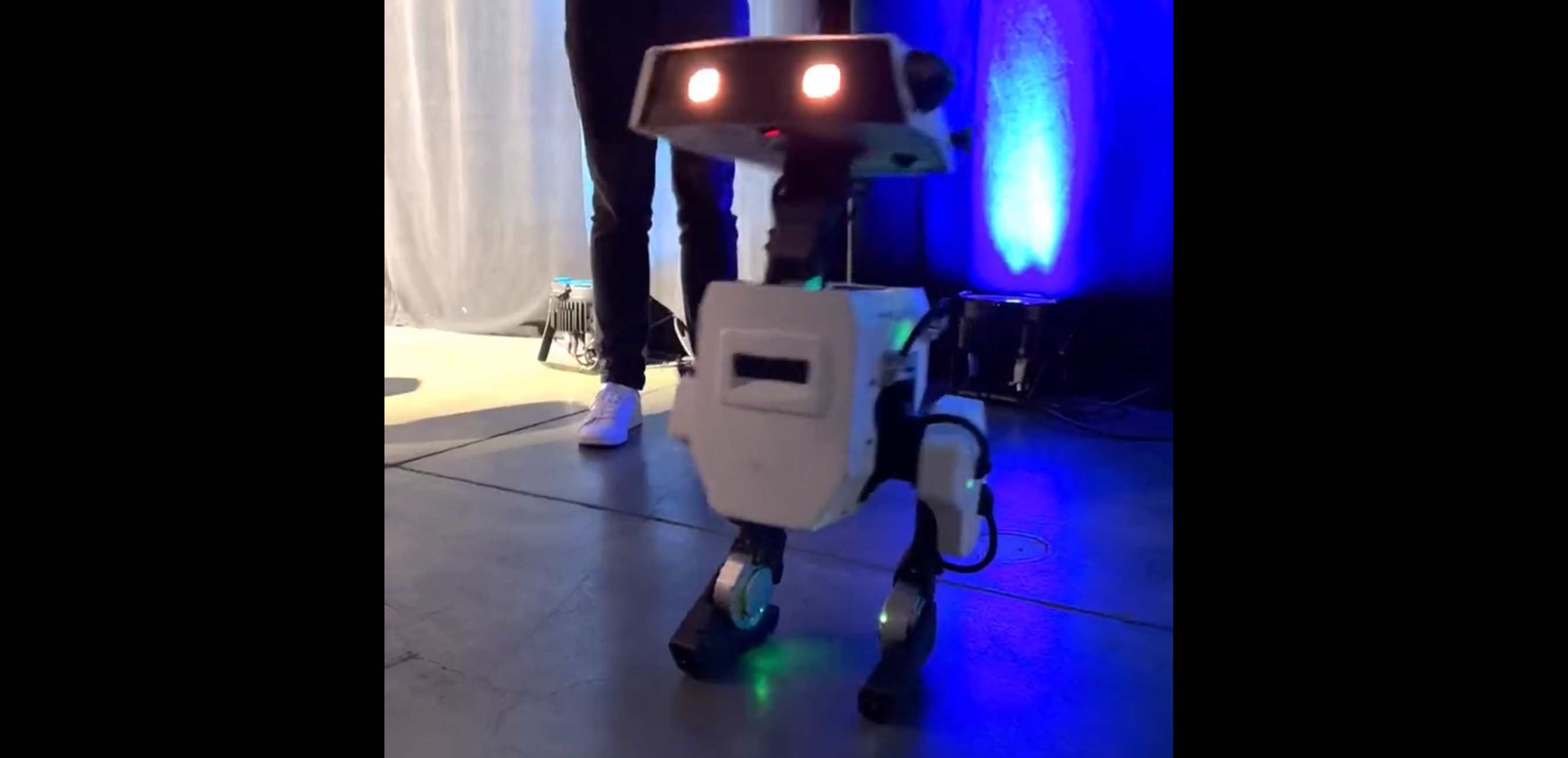Disney Research Announcment | News
Disney Research has announced a new robot at IROS2023 that looks suspiciously like the BD-1 robot from Star Wars Jedi: Fallen Order.
This post from David Scaramuzza from the University of Zurich shows the robot in action.
A more detailed article on IEEE Spectrum explains the research behind the robot and the technology used to create it.
Disney’s history of animatronic characters dates back to 1971, with the Hall of Presidents at Disney World, but making robots express emotions while moving convincingly has become increasingly challenging. To address this, Disney Research developed a new system leveraging reinforcement learning. The team, led by Moritz Bächer from Disney Research in Zurich, created the robot using 3D printing and modular hardware, allowing for rapid design iterations. It features a four-degree-of-freedom head and five-degree-of-freedom legs with dynamic balancing.
Disney’s approach involves collaboration between animators and roboticists, combining artistic intent with technical expertise. The challenge lies in translating animations into real-world robot movements effectively. Disney Research’s solution is a reinforcement learning-based pipeline that simulates and balances the animator’s vision with robust robotic actions. This system significantly reduces the time required to develop a new robotic character from years to months.
Reinforcement learning also leads to highly robust motions, enabling the robot to adapt to real-world scenarios while maintaining its character.
The researchers emphasize that the key takeaway is not just the robot itself but the adaptable process. This platform is hardware-agnostic, allowing for the rapid development of new behaviors, even with different robot forms. Disney aims to explore physical robotic characters further in future.
It’s great to see this kind of research being done in the field of robotics, and I’m excited to see what comes next.
FAQ
1. What is Disney Research’s recent innovation in robotics?
Disney Research has recently unveiled an innovative robotic creation designed to convey emotions and character through its movements. This robot was showcased at the 2023 IEEE/RSJ International Conference on Intelligent Robots and Systems (IROS) in Detroit.
2. What distinguishes Disney’s robot in terms of its movements?
Disney’s robot stands out due to its ability to express a wide range of emotions through its movements. It goes beyond mere functionality, aiming to convey personality and character, from strutting to meandering, through dynamic and expressive motions.
3. How was this robot designed and manufactured?
The showcased robot is primarily 3D printed and was developed by a team from Disney Research in Zurich. Its modular hardware and actuators allow for quick design and iteration, making it a promising platform for further robotic developments.
4. How does Disney’s robot achieve emotive movements?
Disney has developed a reinforcement learning-based pipeline that combines animation and real-world physics to ensure that the robot can respond to its environment and maintain its character. This approach significantly reduces the time required to train the robot on new behaviors.
5. How does this innovation impact human-robot interactions?
Disney Research envisions a world where emotionally expressive robots, like this one, become invaluable allies in various fields, particularly in environments where they work closely with humans. By allowing robots to convey emotions and character, this technology has the potential to revolutionize and enhance human-robot interactions.
6. How can makers and robotics enthusiasts benefit from Disney’s innovation?
Makers and robotics enthusiasts can draw inspiration from Disney’s innovation to create robots that are not just functional but also emotionally expressive. Disney’s journey provides potential frameworks and methodologies for incorporating emotion and character into robotic designs.
7. What is the significance of Disney’s hardware-agnostic approach?
Disney’s approach is hardware-agnostic, meaning it can be adapted for robots with different designs and functionalities. This flexibility allows for the rapid development of a diverse array of robotic characters with unique characteristics and movements.
8. What are Disney’s future goals in the field of robotics?
Disney’s research team is eager to push the boundaries of what’s possible in robotics. While specific details about their future projects remain undisclosed, Disney Research’s journey with this innovative robot is an indicator of the exciting possibilities that lie ahead in the field.

